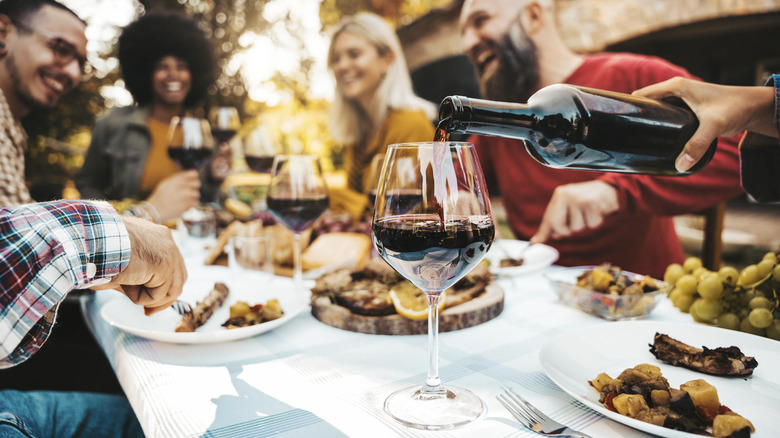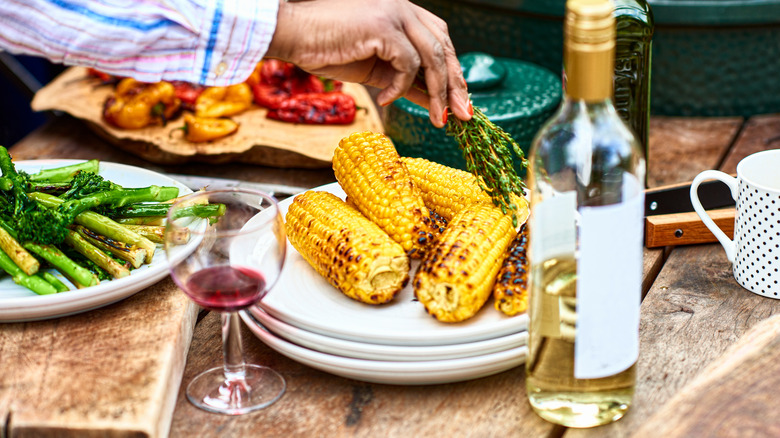How Your Barbecue Side Dishes Impact Your Wine Choices
Okay, so you know to pair a dry rosè with skewers or hot dogs, and a pinot noir with chicken. But if you're looking for more essential wine pairing tips to bring your hosting skills to the next level, Andrew Elder, sommelier at the two-Michelin star DC tasting counter Jônt, is here to help. Turns out, the main meat (or vegetarian grilled item) of the barbecue isn't the only thing you want to keep in mind when picking your wine — your side dishes impact the perfect pairing as well.
Elder says the pairing process relies on recognizing many of the same qualities in the side dish and the wines as you might when pairing a wine with a main dish, such as acidity, creaminess, and body. He gave a few examples, noting that a Sangiovese might pair well with collard greens, a Sancerre Sauvignon blanc with coleslaw, and a Chardonnay with mac and cheese, and shared his reasoning for each.
"With collard greens, the slight bitterness and vinegar used in cooking the greens might call for a red wine with higher acidity," he says. "A tangy, creamy coleslaw might pair well with [a wine that has] good acidity to cut through the creaminess. For mac and cheese, the rich, cheesy flavors might benefit from [a wine] with some body to match the creaminess."
Recognizing the qualities that make a good wine pairing
Elder's pointers are a good starting place, but what about when you branch out beyond the side dishes he's broken down for us? There are a few simple rules you can follow on your path as a sommelier-in-training to impress your guests and please your taste buds. So, the basics: Wines are characterized by traits like acidity, body, tannins, alcohol level, and flavor profile. Some of this will be listed on the label — whether it's fruity, earthy, or spiced, and what the alcohol content is — while factors like tannins and acidity are characterized by certain types of wine, i.e. white versus red, and can be discovered with some simple online research.
Higher acidity wines often pair well with acidic dishes, and vice versa for creamy, cheesy foods. However, fatty or creamy foods can also sometimes benefit from being paired with acidic wines that cut through the grease, as Elder explained might be the case. Spicy foods are often paired with low-alcohol wines and sweet foods with high-alcohol wines. It's often recommended to mirror wines, meaning pairing a fruity wine with a fruity dish, or a light-bodied wine with a delicate dish, and it's also a good idea to pair a very flavorful food with a very flavorful, intense wine. Finally, wines with high tannins pair well with rich red meat due to a protein-tannin reaction that makes both the wine and the meat taste smoother.
At the end of the day, the best wine pairing is the one that you enjoy — so if you want to break any of these "rules," don't be afraid to do so! Everyone has their own preferences, and you have full freedom to drink what tastes best to you no matter what internet advice you hear. Have fun pairing, and enjoy your barbecue.

